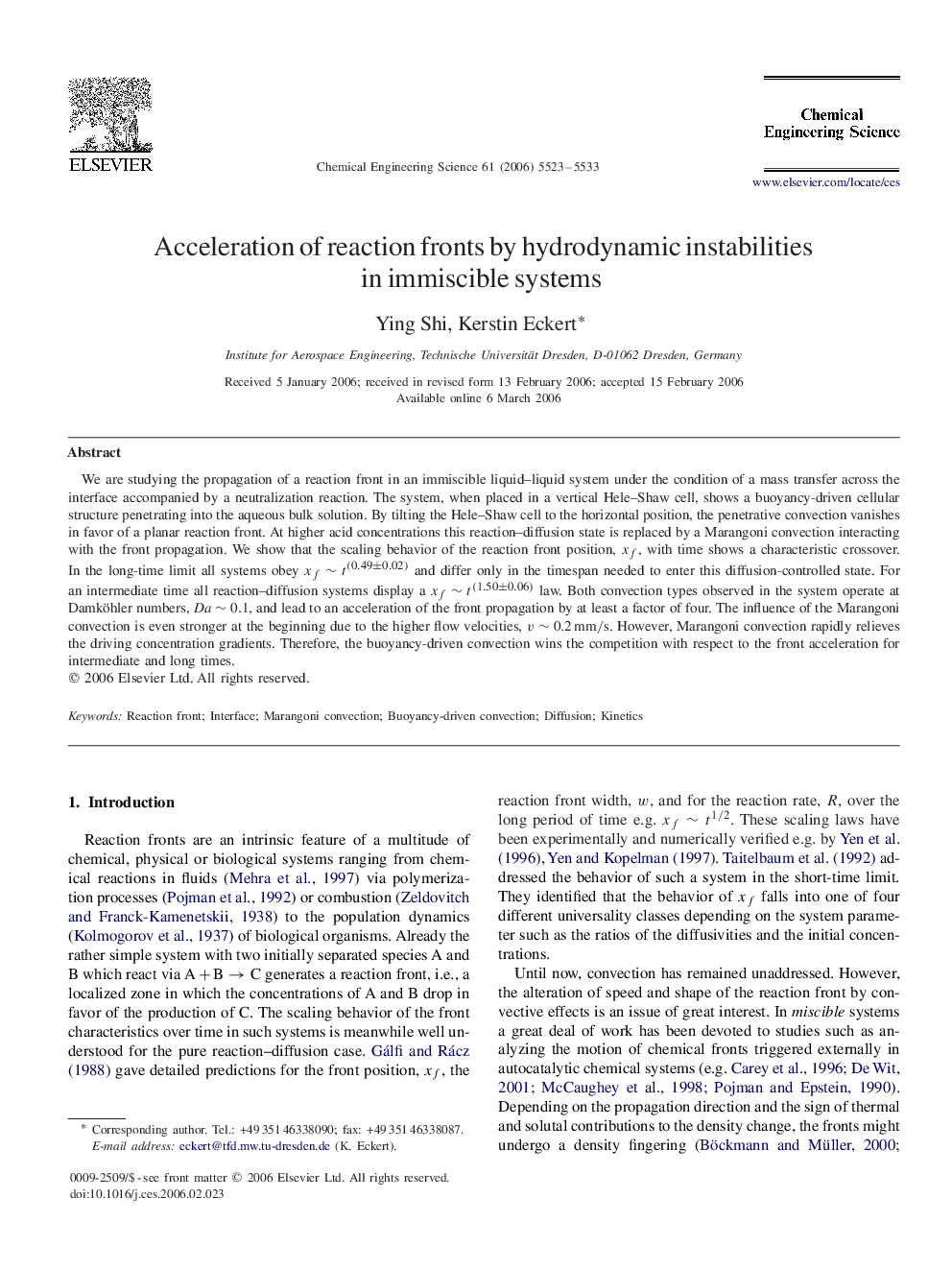| Article ID | Journal | Published Year | Pages | File Type |
|---|---|---|---|---|
| 159794 | Chemical Engineering Science | 2006 | 11 Pages |
We are studying the propagation of a reaction front in an immiscible liquid–liquid system under the condition of a mass transfer across the interface accompanied by a neutralization reaction. The system, when placed in a vertical Hele–Shaw cell, shows a buoyancy-driven cellular structure penetrating into the aqueous bulk solution. By tilting the Hele–Shaw cell to the horizontal position, the penetrative convection vanishes in favor of a planar reaction front. At higher acid concentrations this reaction–diffusion state is replaced by a Marangoni convection interacting with the front propagation. We show that the scaling behavior of the reaction front position, xfxf, with time shows a characteristic crossover. In the long-time limit all systems obey xf∼t(0.49±0.02)xf∼t(0.49±0.02) and differ only in the timespan needed to enter this diffusion-controlled state. For an intermediate time all reaction–diffusion systems display a xf∼t(1.50±0.06)xf∼t(1.50±0.06) law. Both convection types observed in the system operate at Damköhler numbers, Da∼0.1Da∼0.1, and lead to an acceleration of the front propagation by at least a factor of four. The influence of the Marangoni convection is even stronger at the beginning due to the higher flow velocities, v∼0.2mm/s. However, Marangoni convection rapidly relieves the driving concentration gradients. Therefore, the buoyancy-driven convection wins the competition with respect to the front acceleration for intermediate and long times.
